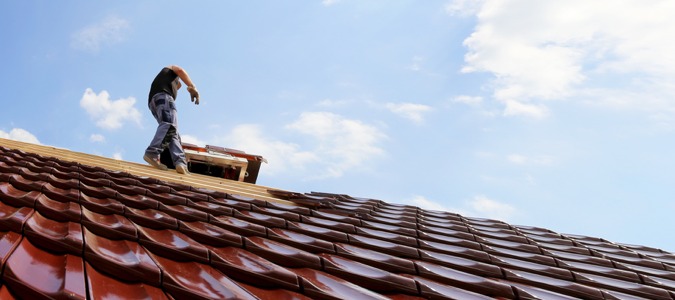
Keeping your roof in tip-top shape is essential to maintain the integrity of your house. Plus, given the costs of new roofing and repairs, protecting your roof will prolong its life and get the most bang out of your buck. Here are some of the best ways to keep your roof protected year-round.
Conduct an annual inspection
It is important to inspect your roof at least once every year. Inspecting it a few times each year, especially in the spring and fall, is an even better practice. If you can not inspect your roof yourself or just want trained eyes to do it for you, professional inspections are available upon request.
Here is what to look for:
- Damaged or missing shingles
- Overhanging branches
- Mold, mildew or other water damage
- Protect your gutters
Keep your gutters protected with gutter guards. Guards are thin pieces of metal or plastic that attach to the top of the gutters. They collect leaves, branches, and other debris that otherwise runs off the roof entirely. Keeping your gutter guarded allows only water to drain into and out of the gutter system. This avoids the buildup of the debris from collecting in the gutter or in the drains.
Damaged or broken guards need to be replaced as soon as possible so clogging and other damage to the gutters is avoided. Repair or replacement is easy and cheap, either can be completed in a matter of minutes.
Clean the roof
While cleaning out the gutters and inspecting the shingles, clear the roof of any additional debris. Sticks and leaves that are scattered across your roof might end up in the gutters or affecting shingles if left alone. Get rid of them yourself.
Also, look for areas with moss or mildew building up. Wipe these areas clean and then check to see if there are any problems in or around those areas. Moss and mildew build-up in wet and damp areas. If there are spots on your roof, you might have improperly installed shingles or a poor ventilation system. In either case, an expert might be needed to assess further options. Cleaning your roof regularly, though, will guarantee you catch the problem before it becomes too serious.
Make sure you have insurance
Most homeowner’s insurance policies cover roof damage that occurs from fire, vandalism, or natural disasters such as tornadoes or hurricanes. This protects your roof from damage in most cases but not always all of them. Many homeowner’s insurance policies don’t cover wind damage. Depending on where you live, wind damage might be a serious concern. Wind can blow debris or tree branches into your roof that cause serious damage or wear areas down making them vulnerable to water damage.
For new roofs, getting wind insurance added to your policy can be a smart move. It can help ensure you don’t have to replace the roof much earlier than you anticipated. After all, you want to get as much out of your roof as possible.
Make sure to take pictures of your roof to have proof if damage occurs. When serious damage does occur, contact your insurance provider to see what type of action needs to be taken. Oftentimes, an inspector will come out and inspect the house himself. Keeping things properly documented can help ensure you get something for your claim. This will make repairs or replacement much cheaper.

